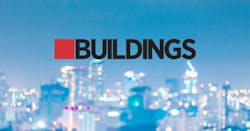What Do Healthy Buildings Look Like Post-COVID? (BOMA 2020)
As the 2020 Virtual BOMA International Conference & Expo drew to a close on Thursday, one of the final educational sessions for the day focused on a topic that every building owner and facility manager is faced with today: healthy buildings.
(Photo: Dr. Joe Allen; Credit: Dr. Joe Allen)
Allen and Macomber, both on staff at Harvard Business School, opened their session, “Healthy Buildings and the Post-Coronavirus Landscape,” with an important question: Why are we ignoring the 90%? Referring to the fact that people are an indoor species that spend 90% of their time indoors, the presenters cited a double-blind study they conducted (#TheCOGfxStudy) to measure the impact of green buildings on the cognitive function of occupants.
The researchers had knowledge workers spend six days over two weeks in an office setting in which they changed three variables in air quality: fresh air, CO2, and common chemical levels.
The study concluded that people perform better even when measured against themselves in various cognitive areas such as activity, focus, task, crisis, info seeking, etc. when they were exposed to high levels of fresh air and lower levels of the other variants.
Through their research, Allen and Macomber identified nine foundations of a healthy building:
- Air quality
- Thermal health
- Moisture
- Dust & pests
- Safety & security
- Water quality
- Noise
- Lighting & Views
- Ventilation
While the study was conducted before the coronavirus pandemic, the authors conclude that buildings can not only affect cognitive function, but also disease transmission.
(Photo: John Macomber; Credit: John Macomber)
As the presenters pointed out, employees (and tenants) are interviewing your building to determine if it’s a place they feel safe leasing or working.
To illustrate their point, they shared several comments taken from the job recruiting website Glassdoor, including one in which an employee asked, “How is this [office building] much different than being on a virus-infected cruise ship for 8+ hours every day, five days a week?”
The session concluded with some actionable steps building owners and facility managers can take, including using five health performance indicators (HPIs) to reduce the risks in reopening their buildings:
- Settings – airflow and other engineering steps (fans, changing filters, humidity controls, etc.)
- Sensors – air quality and other measurable conditions (measuring particulates; employees are doing it on their smartphones now)
- Screening – skin temperature, antibodies: who can come in?
- Surveys – tenant wellbeing (and community behavior) need monitoring, too
- Statistics – is there evidence that it’s working? Or is there early warning that you have a problem (people having respiration problems, for example)?
As Allen and Macomber pointed out, “What gets measured, gets done.”
Read next: Measuring and Creating Happiness in the Workplace (BOMA 2020)

